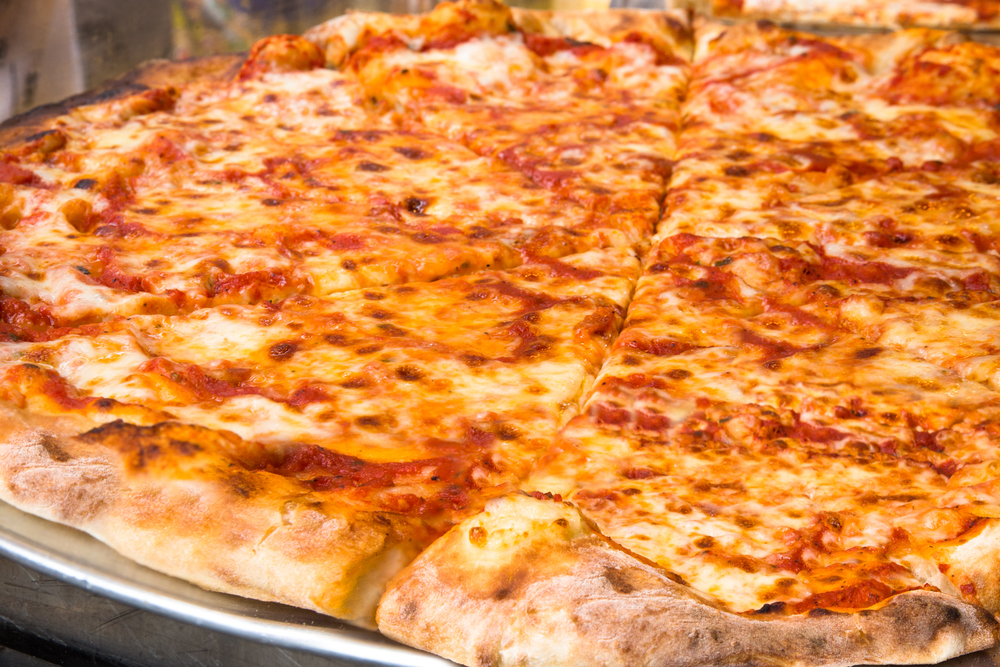The Evolution of New York Pizza: From Neapolitan Immigrants to Iconic Slice Joints

New York pizza is a defining element of the city’s culinary landscape, and its history is deeply intertwined with the waves of Italian immigrants who arrived in the late 19th and early 20th centuries. These immigrants, primarily from Southern Italy, brought with them their traditions, including their beloved Neapolitan pizza. Unlike the modern slice found in countless pizzerias across the five boroughs, Neapolitan pizza was a far cry from what New Yorkers now recognize as their city’s signature food. It was small, round, and often cooked in wood-fired ovens, featuring a soft and chewy crust with simple toppings such as tomatoes, fresh mozzarella, basil, and olive oil.
In the bustling neighborhoods of Little Italy and beyond, Italian immigrants sought to recreate the flavors of home while adapting to the ingredients and equipment available in their new environment. The demand for affordable, filling food that could be produced quickly led to modifications in the traditional recipe. Flour, cheese, and tomato sauce were available in greater abundance in the United States, allowing pizza makers to experiment with larger, thinner, and crispier pies that could be cut into slices. This marked the beginning of what would soon become known as New York pizza, a food that would not only become a staple for Italian immigrants but also a beloved dish for New Yorkers from all walks of life.
The Rise of the First Pizzerias in New York City
The first documented pizzeria in New York City was Lombardi’s, which opened in 1905 in Little Italy. Gennaro Lombardi, an Italian immigrant, began selling pizza out of his grocery store, catering to the growing Italian-American community and introducing the dish to a wider audience. His pizza differed from its Neapolitan predecessor in several ways: it was larger, had a crispier crust due to the use of coal-fired ovens, and could be cut into slices for easy consumption. This innovation was particularly appealing to the working-class population of the city, who needed quick, affordable meals during their lunch breaks.
Following the success of Lombardi’s, other pizzerias began emerging throughout New York City. The coal-fired ovens used by these early pizzerias helped to create a distinctive texture—thin yet sturdy crusts with a slightly charred bottom, topped with simple but flavorful ingredients. By the mid-20th century, pizzerias had become fixtures in many New York neighborhoods, serving not just Italian Americans but also the broader city population that had come to embrace pizza as an essential part of their diet.
The Transition to the Classic New York Slice
As New York pizza continued to evolve, a major turning point came with the introduction of gas ovens, which replaced the coal-fired ovens of the early pizzerias. This shift made it easier to produce pizzas more consistently and efficiently, allowing for a higher volume of pies to be made throughout the day. With the rise of gas ovens, the iconic New York pizza slice was born—thin, foldable, and sold by the slice, making it a perfect grab-and-go meal for busy city dwellers.
Pizzerias in the mid-20th century began focusing on selling individual slices rather than whole pies, a move that significantly contributed to the accessibility and popularity of New York pizza. The classic slice became known for its signature balance of a thin yet chewy crust, a tangy tomato sauce, and a generous layer of mozzarella cheese. Unlike Neapolitan pizza, which is meant to be eaten fresh out of the oven with a knife and fork, New York pizza was designed for convenience, allowing New Yorkers to enjoy it while standing, walking, or commuting.
The affordability and portability of the slice made it a staple food for New Yorkers of all backgrounds. Whether eaten for lunch, dinner, or as a late-night snack, the New York slice became ingrained in the city’s culture, embodying the fast-paced and diverse nature of its people. Over time, pizzerias began experimenting with toppings, from classic pepperoni to more inventive options like buffalo chicken and white pizza, expanding the range of flavors while maintaining the essential characteristics of a New York slice.
The Expansion and Commercialization of New York Pizza
By the late 20th century, New York pizza had transcended its humble immigrant origins and become a national phenomenon. The rise of franchise chains such as Domino’s, Pizza Hut, and Little Caesars introduced mass-produced versions of pizza to a broader audience, but New York pizzerias maintained their commitment to quality and authenticity. Even as these corporate chains gained popularity, New York slice joints continued to thrive, drawing both locals and tourists eager to experience the real thing.
The global reputation of New York pizza also led to the expansion of independent pizzerias beyond the city limits. Former New Yorkers opened pizzerias across the country, striving to recreate the authentic taste of a New York slice. The secret, many believed, lay in the city’s water supply, which was said to contribute to the unique texture of the dough. Some pizzerias outside of New York even began importing water from the city to replicate the distinctive flavor of a true New York pizza crust.
As the demand for authenticity grew, some pizzerias returned to traditional methods, reviving the use of coal-fired ovens and sourcing high-quality ingredients to distinguish themselves from the mass-market competition. The concept of “New York-style” pizza became an identity in itself, celebrated in cities across the United States and beyond. No matter where New Yorkers traveled, they sought out a taste of home, ensuring that the influence of New York pizza would continue to spread far and wide.
New York Pizza in the Modern Era
Today, New York pizza remains an integral part of the city’s food culture, with old-school institutions coexisting alongside a new wave of artisanal pizzerias. While traditional slice joints still serve up the classic, no-frills slices that have defined the city for decades, a growing number of pizzerias are taking a more gourmet approach. These modern pizzerias focus on high-quality ingredients, artisanal techniques, and creative toppings, appealing to a new generation of pizza lovers while maintaining the essence of New York pizza.
Food trends have also influenced the evolution of New York pizza, with gluten-free and vegan options becoming more widely available. Yet, despite these modern adaptations, the fundamentals of a New York slice remain the same: a thin, foldable crust, a perfect balance of sauce and cheese, and an undeniable sense of nostalgia in every bite.
Conclusion
New York pizza is more than just food—it’s a cultural institution, a shared experience, and a symbol of the city itself. Whether eaten at a historic pizzeria in Little Italy, grabbed from a late-night slice joint in the East Village, or enjoyed at a high-end artisanal spot in Brooklyn, New York pizza continues to bring people together. As the city evolves, so too does its pizza, ensuring that this iconic dish remains a beloved part of New York’s identity for generations to come.
Need The Best Burger Restaurant in Tarrytown, NY?
Come visit us at little b’s, just a short walk from the Tarrytown Music Hall, and let us serve you a meal made with love and the freshest ingredients! Whether you’re craving a fully customizable burger with our BYOB option, flavorful tacos, crispy egg rolls, or wings drenched in one of our 15 unique sauces, we’ve got something to satisfy every craving. As a family-owned eatery, we take pride in delivering exceptional service and delicious, made-from-scratch dishes for all. Have questions or want to place an order? Reach out to us today—we can’t wait to welcome you!
